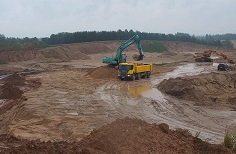According to the assessment, there seems to be a wish to regulate the use of mineral resources in new county plans more than before. However, the bigger number of terms and conditions does not mean that the plans could lead to the substantial changes in practice.
First of all, many of the requirements, either directly or indirectly, come from the Earth's Crust Act. Thus, for example, the requirement to avoid persistent limits of access to mineral recourses due to the construction activities does not change anything in the practice as this is already previously required by the Earth’s Crust Act.
In practice no changes are also expected to result from the generally and vaguely defined terms in the county plans. These will only emphasize the importance of different interests and values in making mining decisions. However, preservation of valuable farmland and landscapes as well as functioning of green network should be taken into account in the mining permits decision process already today.
Nearly all of the draft plans include the requirements that should, to some extent, guide the establishment of the new mines. Some county plans have listed conflict areas where establishment of new mines should be avoided, if possible; in some other county plans the known mineral deposits have been divided into categories. However, the wording of these requirements is also quite general and no explicit prohibition or permission for mining can be found in the draft plans.
In conclusion, if the draft new county plans were adopted in their present form, they would not change the current practice. New mines will be opened, as before, on the initiative of the mining enterprises in their chosen locations, even if mining in an alternative location would result in less serious environmental impacts. The mining conditions would continue to be determined by the mining permits as county plan requirements are too general and do not create a clear framework for establishment a specific mine or quarry.
Read more: the assessment and the overview of county plans in the form of a comparison table (in Estonian)

